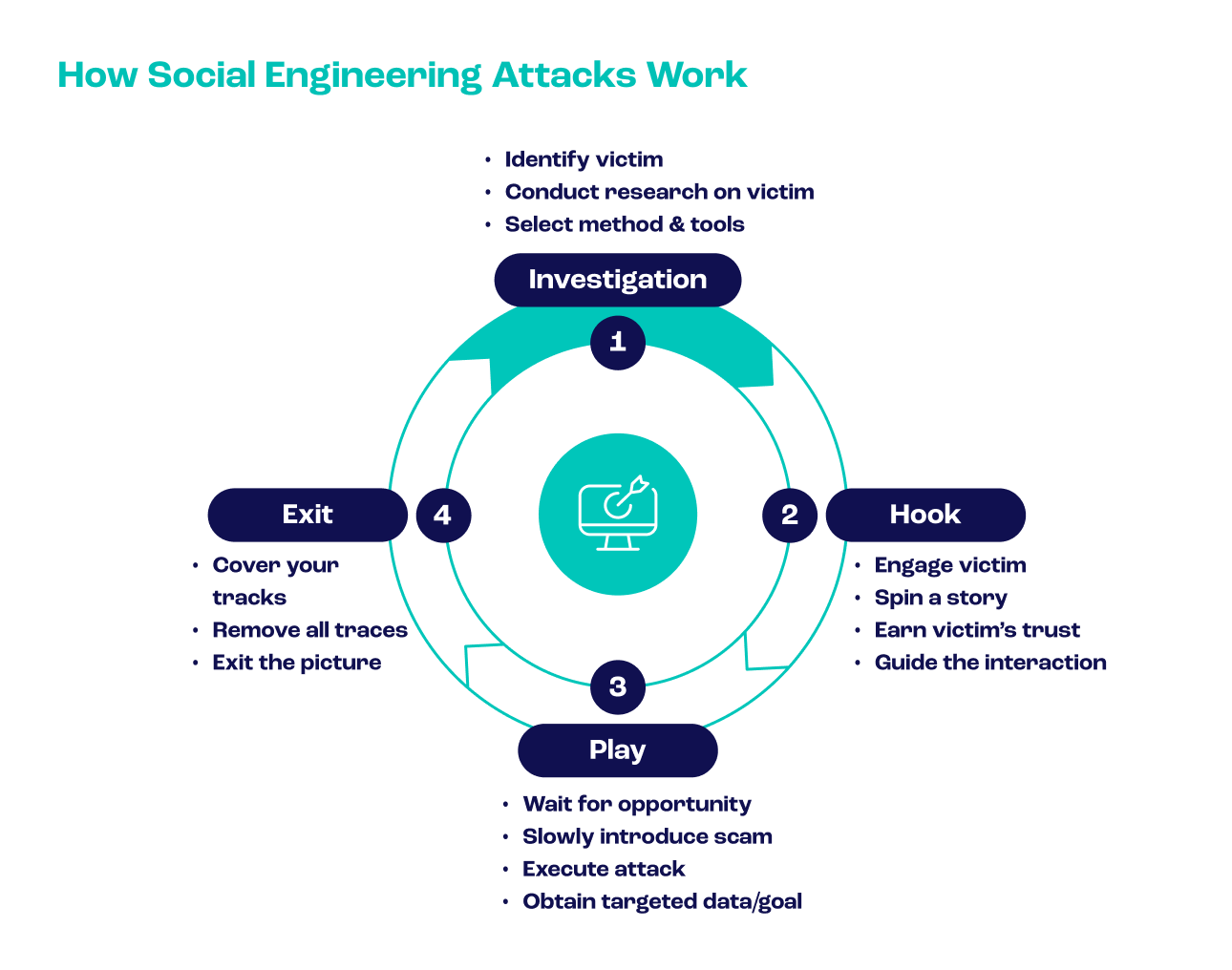Damage from cyberattacks will cost around $10.5 trillion per year by 2025, according to McKinsey. The entry point for fraudsters isn’t just a gap in security software but a gap in training. Verizon Business estimates that 74% of data breaches are down to individuals being absent-minded or tricked by social engineering attacks such as phishing emails.
The answer is security awareness training. We look at what this term means and how it can help businesses.
Partner with SEON to reduce fraud in your business with real-time data enrichment, whitebox machine learning, and advanced APIs.
Speak with an Expert
What Is Security Awareness Training?
Security awareness training ensures people (often staff) lower their risk of falling victim to digital attacks. This includes protecting themselves with approaches such as multi-factor authentication and malware recognition, or using reverse lookup to assess whether someone is trustworthy.
SEON’s widget, shown here, allows you to enter an email address or phone number to reveal a person’s digital footprint. This profiling can show many things, but in short, the smaller the social presence, the more likely they are to be a fraudster.
[email_ip_phone_lookup]The Importance of Security Awareness Training
The fact that so many data breaches occur due to human error highlights the importance of security awareness training.
The best training is holistic, covering everything from organizational system security to keeping private information safe. It should emphasize that trainees must never drop their guard, as social engineering attacks can occur any time.
The diagram below shows the typical sequence of actions that phishing attackers take when carrying out social engineering attacks.

Giving an idea of the scale of the problem, Keepnet Labs’ 2020 phishing report found that 50% of its observed employees opened and read phishing emails, while one in eight answered them.
Key Topics for a Security Awareness Program
A security awareness program should focus on strong, up-to-date cybersecurity compliance, equipment, and measures and ensure a level-headed and well-informed workforce. Key topics include:
- Latest regulatory compliance updates: The most recent news about security authorities and their protocols.
- Network security maintenance: The use of regularly updated firewalls and encryption systems.
- Threat response, such as a list of who to contact in the event of a data breach.
- Office hygiene best practices: Ensuring that file cabinets are locked and used sensitive paperwork is shredded as soon as it’s no longer needed.
- Anti-phishing awareness: Not being too trusting or emotionally invested in the content of emails, phone calls, and instant messaging.
- Digital hygiene: Regularly disposing of old computer files and exercising caution when posting on social media.
- Password management: Using multi-factor authentication (MFA) and password managers.
Together, these measures will protect data, systems, office equipment, the workforce, and more while keeping regulators content.
The Benefits of Security Awareness Training
Security awareness training and post-training tests keep businesses’ operations secure, reducing the risk of financial loss, reputational damage, and regulatory fines. Here’s how:
- Office and data hygiene improvements reduce the likelihood of data being compromised.
- Combining training with post-training tests promotes continuous education and improvement.
- Investing in training for employees can help them feel valued.
- Taking a proactive stance on security matters can reduce financial loss and improve a business’s reputation.
The benefits of security awareness training become more marked the better implemented the program is, so trainers should take stock of current best practices.
Best Practices for Implementing Security Awareness Training
These involve providing informative resources that offer timeliness, relevance, and clarity to trainees. In other words, anyone who delivers security awareness training needs to ensure that it’s informed by new and developing security regulations that are discussed in concise and actionable terms.
Here’s a closer look at the best practices required for security awareness training (SAT):
- Ensure your SAT is informed by the security authorities of your organization, wider industry, and jurisdiction.
- Inform the target trainees ahead of time about the upcoming SAT to allow them to prepare with background research and any questions they’d like to ask.
- Explore the legal and ethical implications of various security measures. Treat your advice sensitively, because some security precautions lead to moral dilemmas. For instance, co-workers in an organization that’s dealing with internal fraud may face a conflict of interest. Clear advice on the business’s whistleblowing policy will help educate trainees from a legal and ethical standpoint.
- Make sure that your SAT is cross-departmental. Security awareness trainers should consider the value of their resources across each department. For example, junior administration teams may be more vulnerable to phishing attempts than IT and HR departments, so the former should receive tailored exercises that help explain signs of social engineering attacks.
- Make the SAT interactive. Integrate assessments, rounds of Q&A, and audience participation exercises. For instance, many training programs now use gamification (such as quickfire quizzes) to ensure a more engaging delivery.
- Discuss case studies to underscore the seriousness of security threats with real-world validity.
With all these points in mind, security awareness trainers should consider the importance of transparency. Providing clear, well-informed and timely instructions to your trainees will ensure there is trust in both the delivery of the training and the security sources it’s based on.
SEON is more than just a software solution, it is your business partner in fraud fighting
Speak with an Expert
Additional Security Measures for Your Business
There are always more opportunities to enhance your business’s security measures. Consider the latest technology in addition to tried and tested methods such as anti-phishing awareness and password protection.
Let’s take a look at some additional security measures that can enhance your business’s cyber-safety and anti-fincrime efforts:
- Biometric authentication: The use of biological data to identify oneself.
- Anti-fraud measures: Dedicated approaches to combate fincrime, such as fraud prevention solutions like SEON.
- Cloud security measures: Protocols for safe online file management.
- Mobile device management (MDM): Collective measures that ensure devices, such as company laptops and smartphones, can be accessed remotely by IT administrators and comply with the correct data protection regulations.
As organizations become increasingly invested in online security and remote working, security awareness trainers should consider the value of these measures. A strong approach to security awareness training will cover:
- Traditional security measures, such as password protection and card readers.
- Modern security measures, such as biometric authentication and MDM.
- Future security measures, such as generative AI and deepfake detection – particularly given that biometric authentication will become increasingly challenged by AI-focused fraudsters in the years to come.
By focusing on additional security measures for your business, your security awareness training will be better equipped to discuss which security measures have traditionally worked, which ones work best today, and which ones will need to work in the future.
FAQs
Assuming you have the required materials and staff, a security awareness training program can be built in four to eight weeks. However, more complicated programs can take months.
This depends on the business requirements, but at the least training should be provided in line with new or updated data protection laws and company policies as well as for new joiners.
Basic, essential, and/or government-issued training is usually free. More advanced training will cost around $1,000 for every 50 employees while larger organizations looking for more upmarket training should expect to pay a lot more.
Related Articles
- 5 Tips on Properly Training Fraud Managers
- Guide to Risk Operations (RiskOps)
- Compliance as a Service
Sources








